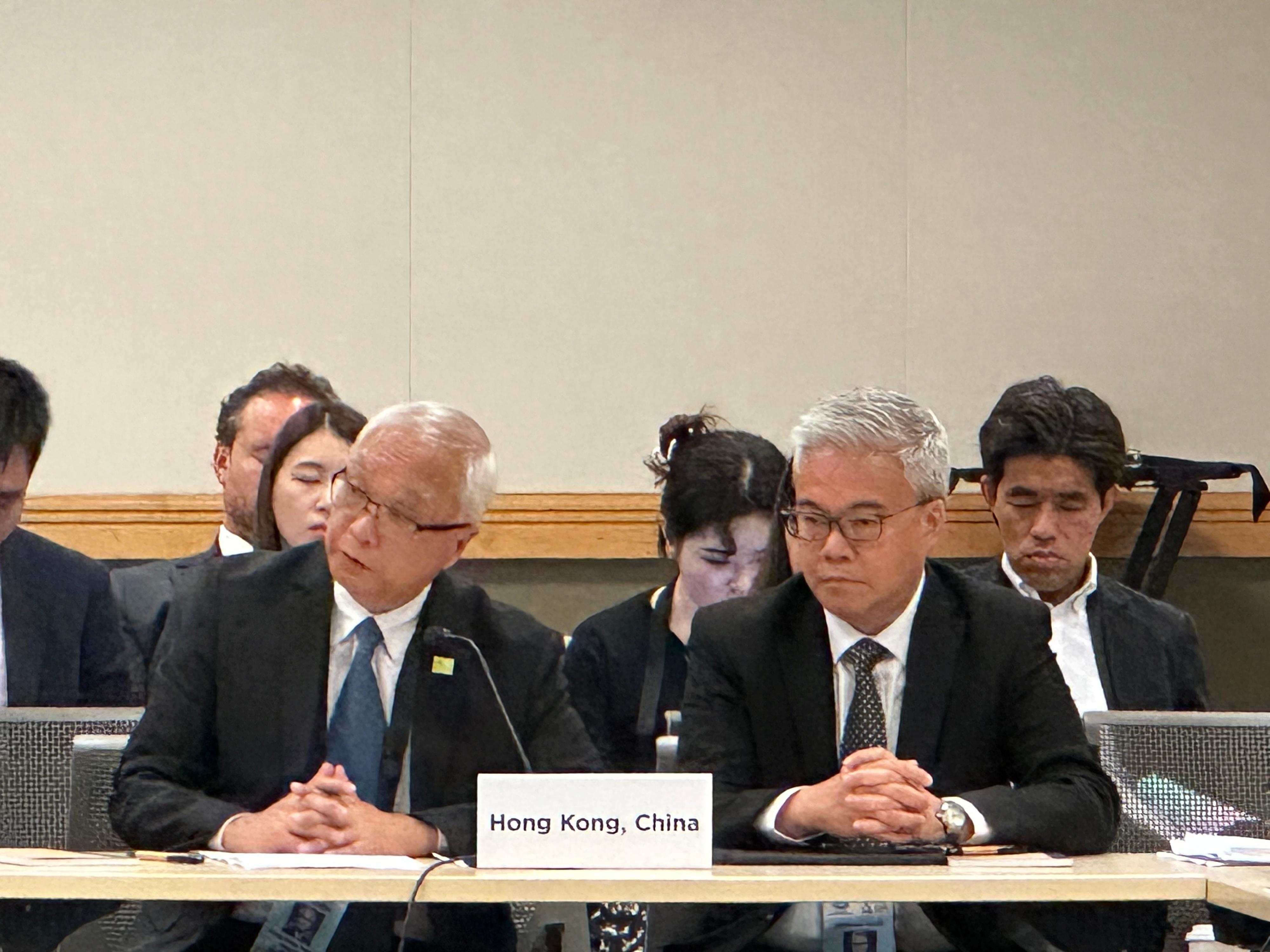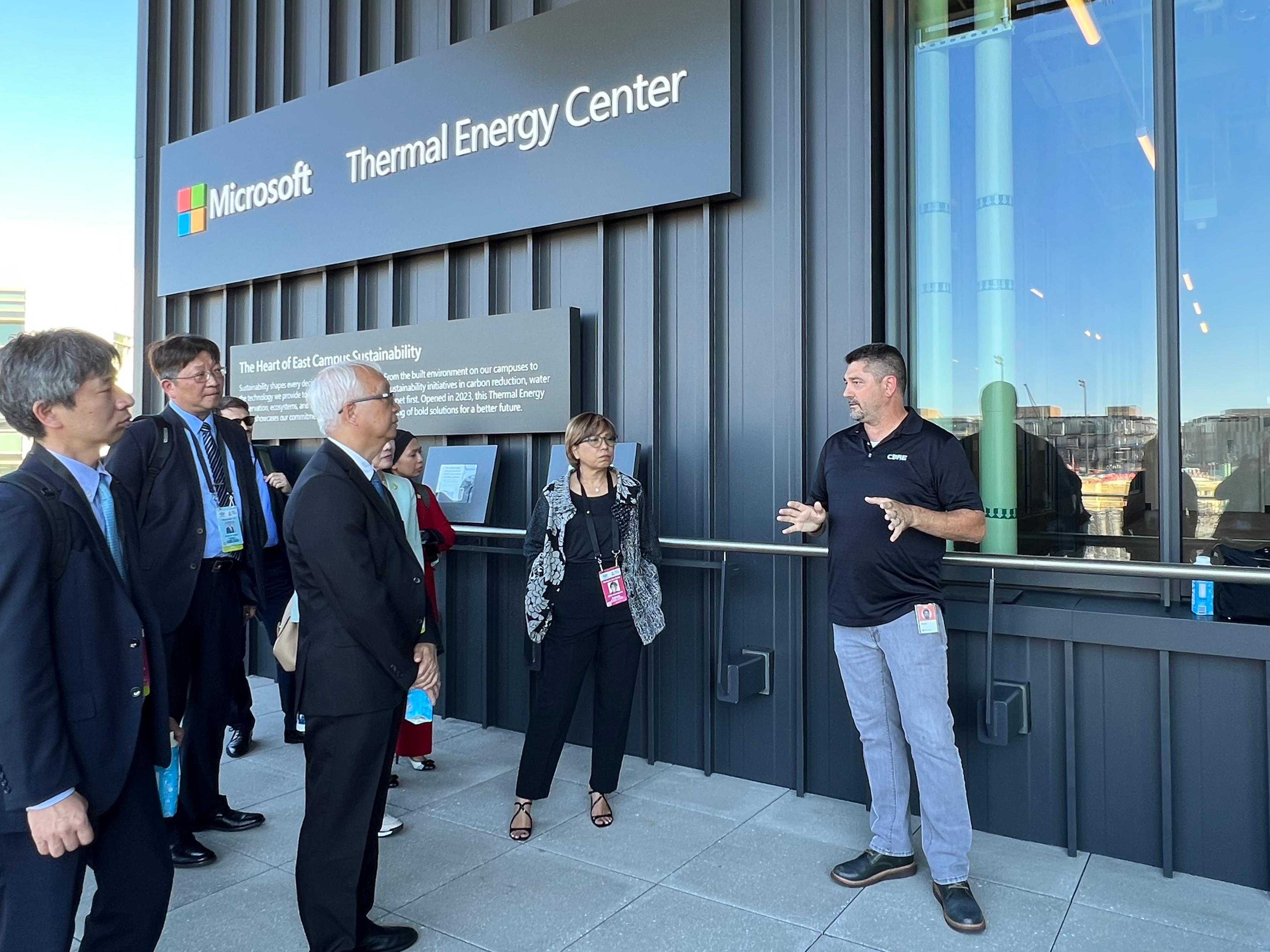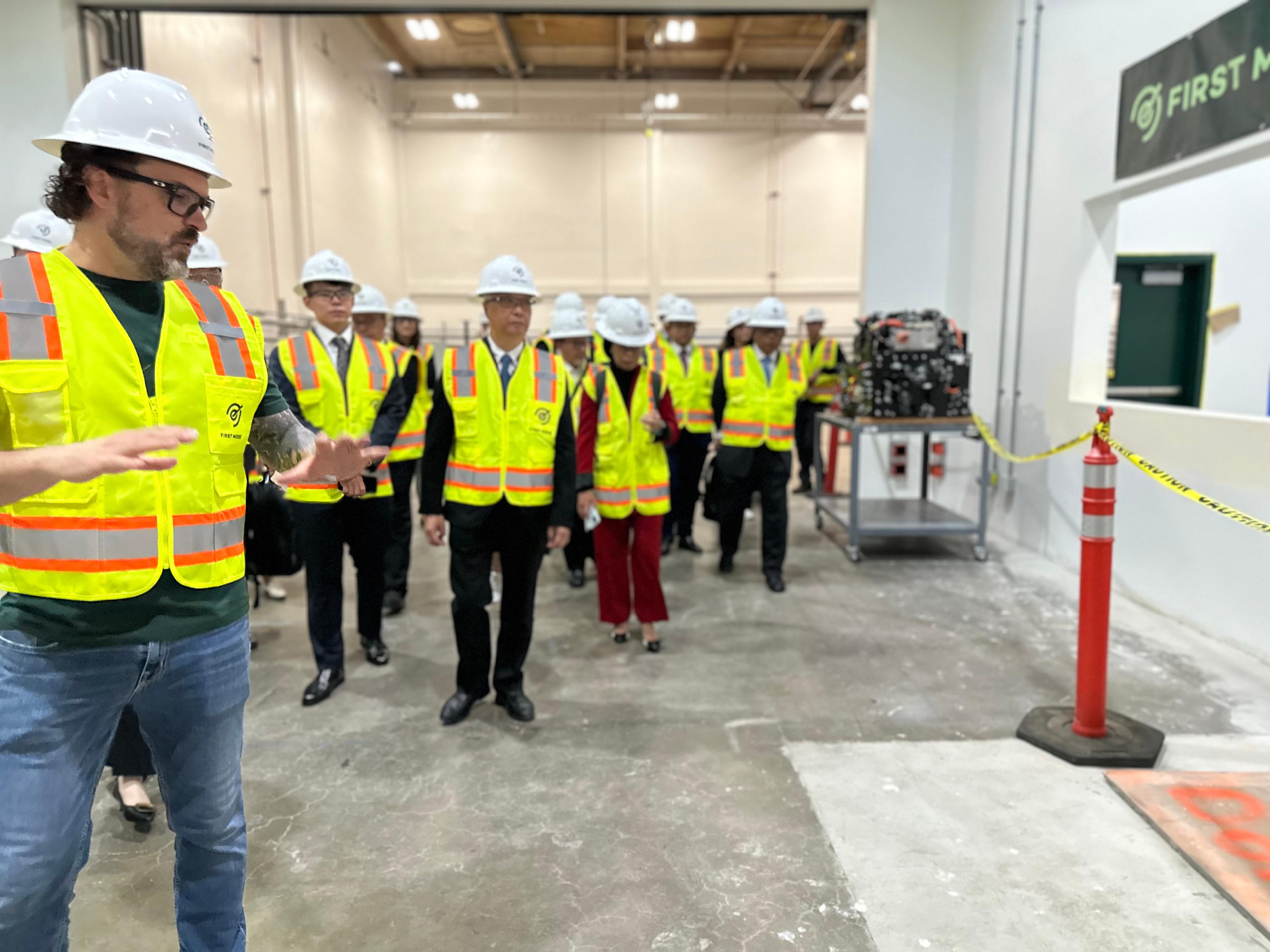The Secretary for Environment and Ecology, Mr Tse Chin-wan, attended the Asia-Pacific Economic Cooperation (APEC) Energy Ministerial Meeting, under the theme of "Creating a Resilient and Sustainable Future for All", held in Seattle, the United States (US), today (August 15, US time).
Speaking at the opening plenary, Mr Tse shared with other energy ministers the Hong Kong Special Administrative Region (HKSAR) Government's strong commitment to combat climate change through four major decarbonisation strategies promulgated in the Hong Kong's Climate Action Plan 2050. A new Office of Climate Change and Carbon Neutrality has been set up to formulate strategies, policies and action plans for tackling climate change and achieving carbon neutrality with a view to strengthening the co-ordination and promotion of deep decarbonisation. A dedicated climate budget of $240 billion has been earmarked for decarbonisation and green projects.
Mr Tse said, "Hong Kong, China, will continue to sharpen our own policies, step up actions in combating climate change, and welcome collaboration with other APEC economies to shape a greener tomorrow." With a view of contributing to APEC's energy goals, the HKSAR Government has been participating in the APEC Energy Working Group and sponsoring energy projects. APEC's Energy Intensity Reduction Goal is to reduce APEC's aggregate energy intensity by 45 per cent by 2035, against the 2005 level. So far, the energy intensity in Hong Kong has decreased by over 30 per cent.
When attending the discussion session entitled Power Sector Decarbonization on the same day, Mr Tse shared with APEC member economies the strategies and work of the HKSAR Government on decarbonising the power sector. As a result of sterling efforts made by the HKSAR Government to reduce carbon emissions of the power sector, the share of coal has dropped to about a quarter of the fuel mix in 2022. He said that a new offshore liquefied natural gas terminal in Hong Kong had commenced operation to provide a cleaner, more reliable and diverse energy supply.
"To further decarbonise our power sector, we have set the target to cease using coal for daily electricity generation by 2035. We are also striving to increase the use of zero-carbon energy and its share in electricity utilisation to around 60 per cent to 70 per cent before 2035," Mr Tse said.
Regarding the development of renewable energy, Mr Tse highlighted the plan of installing more floating solar power systems at reservoirs and introducing highly efficient storage battery technology. Small-scale renewable energy systems are being installed at public housing estates and government premises and facilities. The HKSAR Government is also exploring collaboration with neighbouring regions on zero-carbon energy projects.
"These will help us achieve the interim target to reduce carbon emissions by half from the 2005 level before 2035," Mr Tse said.
Mr Tse also visited new energy facilities arranged by the host economy, including the Microsoft Thermal Energy Center and a carbon reduction company to learn about the latest new energy developments in the US.
Yesterday (August 14, US time), Mr Tse had a side meeting with the Deputy Director of the National Energy Administration, Mr Ren Jingdong, to exchange views on strengthening regional co-operation.
Mr Tse will continue to join other discussion sessions on August 16 (US time) and will conclude his visit on August 17 (US time).




